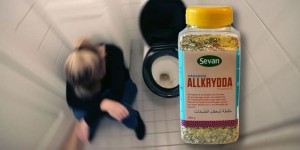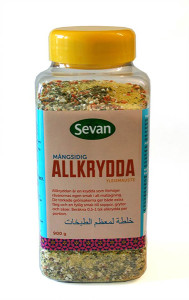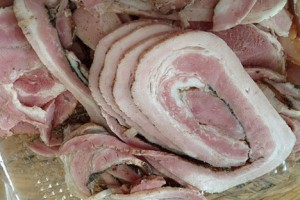In the latest incident, at least 80 people picked up salmonella at a restaurant on the Swedish island of Öland last week, with Sweden’s Public Health Authority connecting the outbreak to the savoury spice mix, known as Allkrydda, which is sold in supermarkets across the nation.
 It said the mix was already suspected of making dozens of other people ill, with a total of 143 salmonella cases reported in 17 out of Sweden’s 21 regions since December 2014.
It said the mix was already suspected of making dozens of other people ill, with a total of 143 salmonella cases reported in 17 out of Sweden’s 21 regions since December 2014.
“This is one of the largest outbreaks in recent years,” Jonas Toljander, a spokesperson for Sweden’s Food Standards Agency (Livsmedelsverket) told the TT newswire on Tuesday.
He added that the spice mix, produced by food company Sevan, was thought to be behind the nationwide salmonella scare, although experts had yet to definitively prove a link.
“It is important to say that we do not yet know if our products are linked to this,” the business manager for Sevan, Julia Kronlund, explained to Swedish broadcaster SVT on Tuesday.
“What they [the victims] have in common is that they have consumed the seasoning mix,” she said, but added that other potential causes of the outbreak could not yet be excluded.
A spokesperson for Sweden’s Public Health Agency (Folkhälsomyndigheten) told TT that it was now carrying out tests on similar spices, while Sevan said that it had submitted more samples to be checked over by experts.
But Sevan said it was recalling all Allkrydda products sold since 2014, in order to avoid exposing customers to any unnecessary risks. It advised people who had the spice jars at home to return them to the stores where they bought them from, where they would be granted a refund, with Sevan footing the bill.
The recalled spice products are:
Sevan Allkrydda 900g (serial number 7221217881469)
Sevan Allkrydda 450g (serial number 7331217881452)
Sevan Allkrydda Hink 5kg (serial number 7331217010708)
 Additional spice mixes with similar content from different suppliers also tested positive. The outbreak investigation suggests there could be a risk of contaminated products being also on the market in other countries.
Additional spice mixes with similar content from different suppliers also tested positive. The outbreak investigation suggests there could be a risk of contaminated products being also on the market in other countries.









